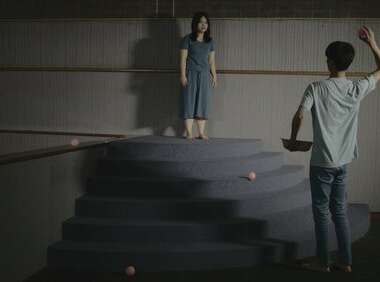Various Artists
Opening: Friday 23 June, 7-9pm
A Free Bus will run between Belfast and Portadown on the evening of the opening.Leaves Belfast from Golden Thread Gallery at 6.45pm. Returns from Portadown at 9pm
Exhibition continues: 24 June – 22 July 2017
Symposium: “Making A Living As A Ceramicist”
Friday 30 June, 12noon
A Creative Momentum event, presentation and discussion on how to make a living as a ceramicist, includes networking and lunch provided. This event is free of charge but registration is essential. To register please contact Niall Drew on 028 3831 2485 or Niall.Drew@ArmaghBanbridgeCraigavon.gov.uk
Ceramics and its Dimensions is a project which examines European ceramics from the perspectives of the past as well as of the future, with its new possibilities. The project has partner institutions in eleven different countries in Europe and it is co-funded through the Creative Europe program of EU and coordinated by the Porzellanikon Staatliches Museum für Porzellan, Hohenberg a. d. Eger / Selb.
Ceramics and its Dimensions: Shaping the Future (Module 6) is one of the ten modules (sub-projects) of the project and led by Aalto University, School of Art, Design and Architecture, Department of Design, Helsinki, Finland. The sub-project consists of a workshop, a touring exhibition and a publication. It has been co-funded by the Finnish Ministry of Education and Culture.
For more information on the project visit: futureceramics.aalto.fi
Or check out the Facebook page: www.facebook.com/ShapingTheFutureCeramics/
The exhibition will be accompanied by a publication, ‘Ceramics and its Dimensions – Shaping the Future’:
Foreword & Introduction
Ceramics is a natural product. The raw materials, such as clay, kaolin sand, feldspar, quartz and other minerals, are taken from the ground. People have known this for thousands and thousands of years, and they have taken advantage of the special characteristics of ceramics as a material: that is, its persistence, loading capacity, waterproofness and chemical and bacterial resistance. Throughout history, ceramics has played an important role in the development of different kind of societies all around the world, influencing the way people have built their houses, lived their lives and eaten their food.
The European project Ceramics and its Dimensions seeks to be a part of the rediscovering of the role of ceramics and the bringing forth of the knowledge of the heritage and the different traditions of the use of ceramics. This ambitious project has connected museums, architects, designers, industry and stakeholders from different European countries to explore ceramics according to its cultural, historical, technical and artistic aspects. The project is supported by the EU Programme Creative Europe, and it brings together twenty-five partner institutions from eleven European countries: research institutes that are exploring for the new ceramic materials and new ways to use the already known materials; factories that provide a platform for realising the objects that the new generation of designers have in mind; museums that on the one hand preserve the knowledge of our heritage and on the other hand support our evolving contemporary culture by presenting their collection items as a source for inspiration; and universities that educate visionary actors in the field of art and design who have the capacity and passion to grasp the complex challenges that the twenty-first century entails.
Within the project, there are ten separate modules that focus on diverse aspects of ceramics. Each of the modules uses their own way to explore, discuss, show and share their specific topics. For example, the module European Cultural Lifestyle in Ceramics – from Baroque until today constitutes a touring exhibition that presents some carefully selected items which mirror the history of ceramics in the European lifestyle from the Baroque period to the present. Then the module Architectural Ceramics in Europe uses the form of a database to present some extraordinary buildings in European history. It highlights the fact that ceramics is not an insignificant building material but in fact one which has in many cases improved the quality of architecture significantly. The module Prop ceramics – ceramics in movies and advertisements takes a retrospective view of the socio-cultural background of the use of ceramics in films.
On the other hand the module Ceramics – what it means to me brings us to the question of how to use ceramics for improving the living conditions of people and how to make sure that ceramic products are sustainable. It also tackles the fundamental question of how we can create ceramic pieces that are produced in large quantities yet at the same time feel personal. To support the challenges for the upcoming generation, the Future Lights module and competition is targeted at young designers who have just started their careers. The module provides a chance for the selected participants to promote their career as designers and ceramicists. Another module in which the new generation of artists and designers are provided an opportunity to explore the future through ceramic material concretely is Shaping the Future – Ceramic Development and Tomorrow’s Design. Right now, you are handling the publication that will discuss and show in detail how the module is in fact shaping the very future!
Wilhelm Siemen
Director Porzellanikon Staatliches Museum für Porzellan, Selb, Germany, Head Ceramics and its Dimensions project



